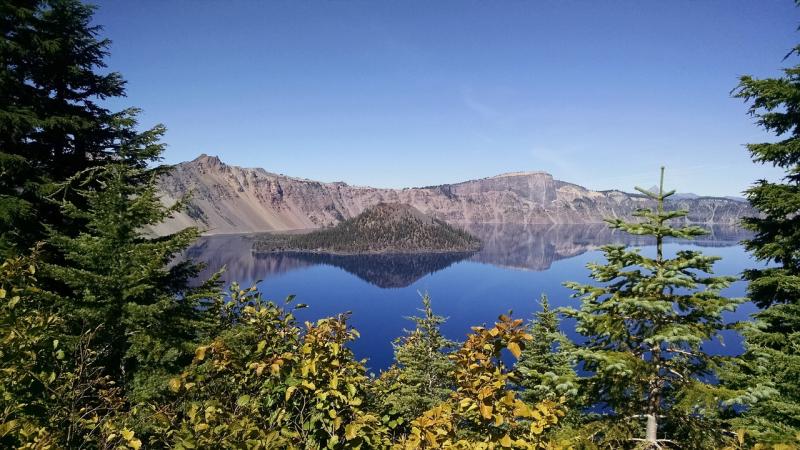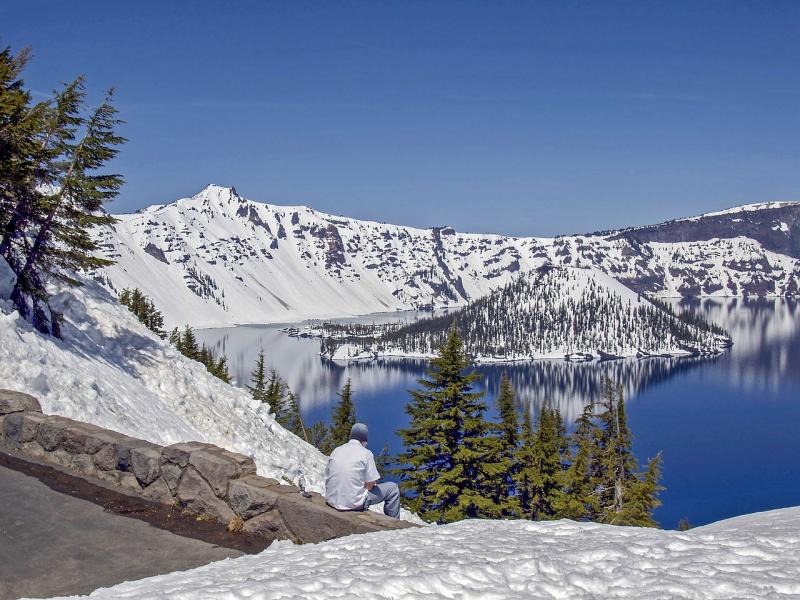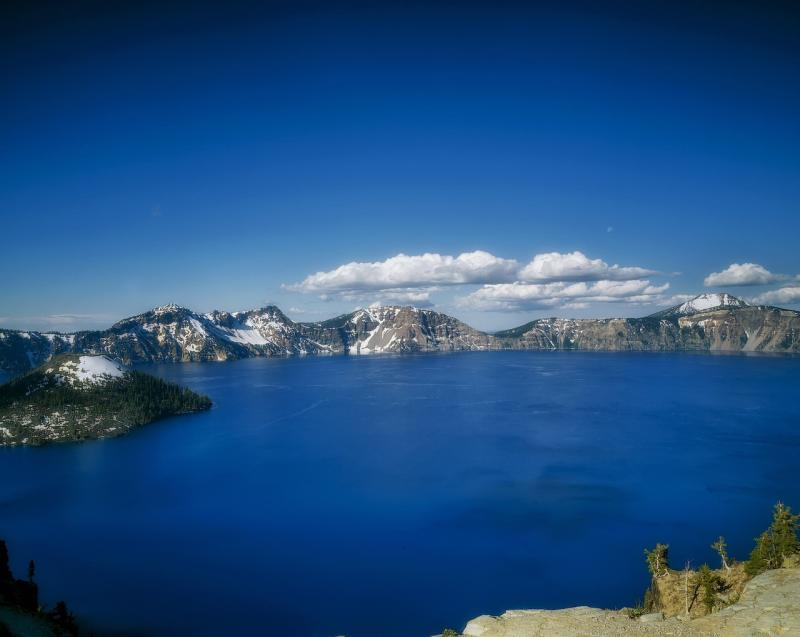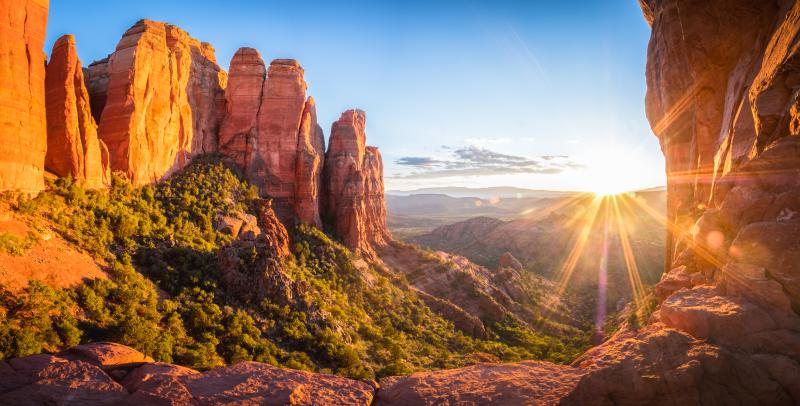View It
Visit It
Crater Lake
Oregon
Visit Crater Lake
Crater Lake, nestled in the Cascade Mountains of southern Oregon, is a breathtaking natural wonder that draws visitors from around the world. Formed around 7,700 years ago by the collapse of the volcano Mount Mazama, the lake is renowned for its vivid blue color and pristine clarity. At a depth of 1,943 feet, it is the deepest lake in the United States and one of the most striking examples of a caldera lake globally. The lake's isolation and the high altitude (over 6,000 feet) contribute to its remarkable purity and vibrant hue, as there are no incoming streams or rivers to disturb the water.
Visitors to Crater Lake National Park can explore a variety of scenic wonders and recreational activities. The Rim Drive, a 33-mile road that encircles the lake, offers numerous overlooks with spectacular views, perfect for photography or simply soaking in the vast beauty of the area. During the summer months, boat tours are available, taking visitors closer to the lake’s iconic features, such as the Old Man of the Lake—a full-sized tree that has been bobbing vertically in the lake for over a century—and Wizard Island, a cinder cone that rises prominently from the lake’s surface. Hiking trails of varying difficulty levels abound, including the popular Cleetwood Cove Trail, which allows visitors to access the lake shore and take a dip in the crystal-clear waters.
For those interested in the geological and cultural history of Crater Lake, the park offers educational programs and guided tours that delve into the volcanic activity that shaped the region and the cultural significance of the area to the Klamath Tribes, who have long held the lake sacred. The park's two visitor centers, the Steel Visitor Center and the Rim Visitor Center, provide exhibits and films about the natural and human history of the park.
Regardless of the season, Crater Lake inspires awe. In winter, the landscape transforms into a snowy wonderland, offering opportunities for snowshoeing, cross-country skiing, and photography of the snow-laden trees and cliffs. The contrast of the deep blue lake against the stark white snow is mesmerizing. Whether seeking adventure, relaxation, or a deeper connection with nature, Crater Lake National Park offers an unforgettable experience that resonates with all who visit this unique and enchanting place.
Crater Lake Monthly Weather Conditions
LOW
TEMP
HIGH
TEMP
DAYS OF PRECIP.
January
19°F
21°F
19
February
19°F
21°F
17
March
19°F
38°F
19
April
23°F
38°F
19
May
31°F
44°F
12
June
35°F
57°F
12
July
42°F
68°F
12
August
42°F
68°F
12
September
38°F
57°F
12
October
31°F
57°F
12
November
21°F
38°F
13
December
19°F
33°F
21
Need to Know Before You Go To Crater Lake
Find your Next Adventure in Crater Lake
Explore Crater Lake
- Crater Lake is the deepest lake in the United States, with a depth of 1,943 feet.
- The lake was formed around 7,700 years ago by the collapse of the volcano Mount Mazama.
- Crater Lake is known for its vivid blue color and water clarity.
- There are no rivers flowing into or out of the lake; all water comes from precipitation.
- The lake is home to two islands: Wizard Island and Phantom Ship.
- The Old Man of the Lake is a full-sized tree that has been bobbing vertically in the lake for over 100 years.
- Crater Lake is one of the snowiest inhabited places in the USA, receiving an average of 43 feet of snow per year.
- The lake is a sacred site for the Klamath Tribe of Native Americans, who have long regarded it as a spiritual place.
- Crater Lake National Park was established in 1902, making it the fifth oldest national park in the United States.
- The lake's water is refilled entirely from snow and rain, taking about 250 years to replace all its water.
Featured Picture Gallery

Crater Lake was Formed By a Collapsed Volcano Named Mount Mazama

Even in the Winter, Crater Lake Provides a Beautiful View

Even When the Weather is Warming in Other Areas, Crater Lake Can Still be Snowy in May and June
Explore Similar Locations
Banff

Grand Canyon

Sedona

Jackson Hole

